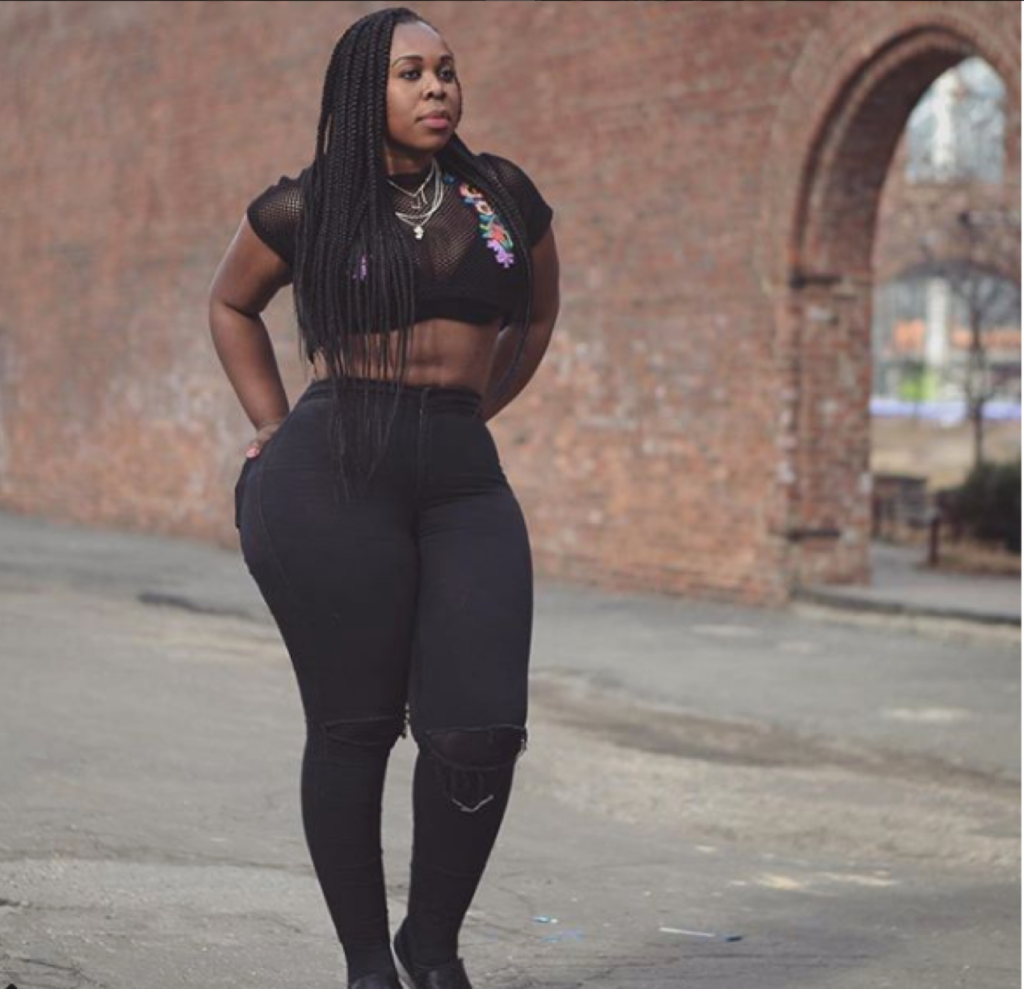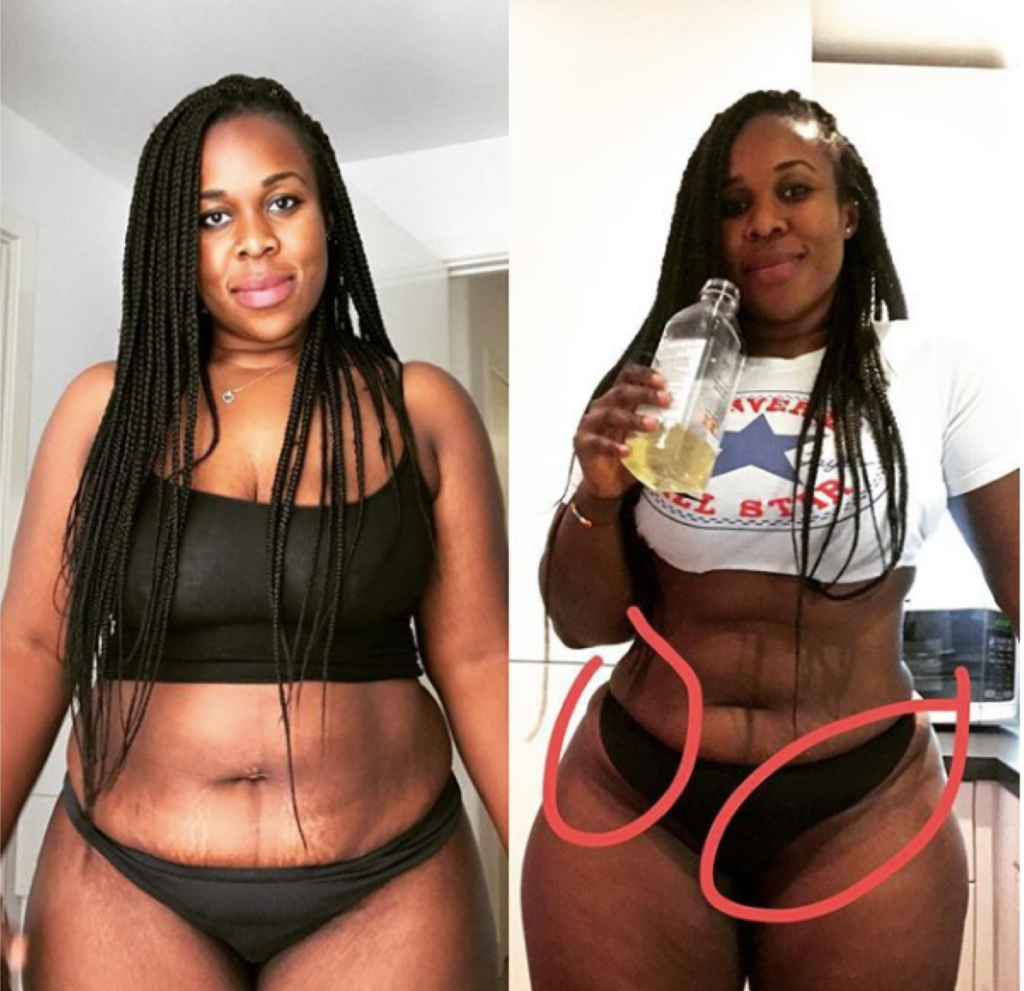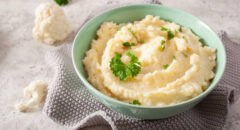
Nowadays, weight loss transformations are a dime a dozen, and it's getting harder to tell what's real and what's plastic surgery. But the most significant or meaningful measure of all is when a person is not only able to keep it off, but they are able to tell you how they do it.
Kadija is one of those people. The beautiful mother of two gained over 100 pounds over a two-year period and knew she had to do something, but what?
On her website, she details how she lost all the weight and kept her incredibly gorgeous curves, using a method or diet that not many people are familiar with.
Healthy Weight Loss: “Stop Beating Yourself Up And Believe In Yourself”

Here's Kadija in her own words:
Let me start off by saying that I am not a fitness instructor or a dietician, I am an ordinary divorced mum of two amazing little boys, who are the motivation and driving force for not only my weight loss but also in getting my life back on track.
During my marriage, I went through a tough time, which lead me to go from 165lbs to 280lbs in two years. After my divorce and the birth of my youngest son in May 2015, I decided that I had to do something in order to regain my life and confidence back.
After many diets, some would work, others only temporarily and others would not even work at all. I embarked on a journey to discover what could work for me and that is how I came about designing The Kefir Plan.
So, you're probably asking what is Kefir?
Kefir is a fermented drink, traditionally made using cow's milk or goat's milk.
It is made by adding kefir "grains" to milk.
These are not grains in the conventional sense, but cultures of yeast and lactic acid bacteria that resemble a cauliflower in appearance.
Over a period of 24 hours or so, the microorganisms in the kefir grains multiply and ferment the sugars in the milk, turning it into kefir.
Then the grains are removed from the liquid, and can be used again.
So basically, kefir is the drink, but kefir grains are the "starter kit" that you use to produce the drink.
Kefir originated from parts of Eastern Europe and Southwest Asia. The name is derived from the Turkish word keyif, which means "feeling good" after eating.
The lactic acid bacteria turn the lactose in the milk into lactic acid, so kefir tastes sour like yogurt, but has a thinner consistency.
Although weight loss was one of the major benefits, another health advantage I found was the positive effect Kefir has on those who suffer with anxiety, depression and sleep disorders like myself.
So, what is the Kefir plan?
According to her website, Kadija created a plan that should not be seen as a "weight loss plan" but rather as a stepping stone to a healthier lifestyle. It is simple, easy to follow andcan be implemented into your everyday lifestyle.
The plan is broken down into three easy-to-follow phases. It is to be used with our kefir starter culture which can be purchased by clicking here. Details of what you may and may not consume are outlined in the plan itself.
RELATED: 300-Pound Weight Loss All Started With ‘The Walmart Diet’
Phase 1 - Cleansing Phase: Lasts between 7-10 days. During this stage, you must only stick to the foods detailed on the plan.
Phase 2 - Breakthrough Phase: Lasts between 10-21 days. Here you can slowly reintroduce other foods in conjunction with those on the plan.
Phase 3 - The Maintenance Phase: Lasts for as long as you would like. As the name suggests, this phase is about ensuring you can maintain the new routine. At this point, you will be able to incorporate parts of the foods on the plan into your everyday routine and enjoy the benefits of seeing the plan through to the end.

She sums it up best in an Instagram post, "When I started the kefir plan it was never solely about losing weight...It was because I had reached a point and needed to change my life. That is what my plan is designed to do. It's designed to change how you view your relationship with food and test your willpower. Nothing in life is easy but if you want it bad enough you'll get it and TRUST ME if I CAN do it then anyone can 💯. In life you have to be comfortable with being uncomfortable."









